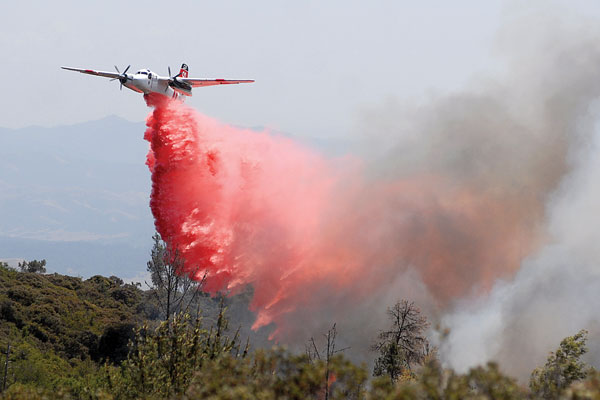A tame fire season so far should not lure Northern Californians
into complacency, officials warned Thursday, as a new blaze — a
reminder — tore through the Santa Cruz Mountains.
By Matt Weiser, The Sacramento Bee
A tame fire season so far should not lure Northern Californians into complacency, officials warned Thursday, as a new blaze — a reminder — tore through the Santa Cruz Mountains.
The Sacramento region’s worst fire months typically are September and October, when hot days linger, and trees and brush are driest. And amid a third year of drought, experts said a quiet start is no harbinger for the rest of the fire season.
“I can’t say if we are in a mild fire year. So much of it is still ahead,” Scott Stephens, a UC Berkeley professor of fire science, said in an e-mail. “Most years in California have the potential to be big fire years, simply because of the way we have managed our forests and the population of the state.”
The Lockheed fire in the Santa Cruz Mountains flared to life Wednesday and had burned 2,800 acres of steep forest by late Thursday. The California Department of Forestry and Fire Protection issued a mandatory evacuation order for the town of Bonny Doon and part of Swanton, totaling about 2,200 people.
As she evacuated her home near Swanton, Linda Lemaster, 60, said she saw thick smoke and flames.
“I thought of volcano lava the way it was moving in through the trees,” she told the Associated Press.
The cause is under investigation, said Cal Fire spokesman Daniel Berlant.
“This year has the potential to be a very, very busy fire season for us,” he said. “Homeowners have to prepare by creating defensible space so when a fire does happen, their home is protected and firefighters can make a stand to protect it.”
Fire activity around Sacramento and throughout California has been mild so far. In Cal Fire jurisdiction, fires burned 14,644 acres through Saturday. That compares to 351,128 acres during the same period last year.
Similarly, fires on U.S. Forest Service land have burned only about 10 percent of last year’s acreage.
Curiously, both agencies have seen about the same number of fires. They just haven’t scorched as much land.
The reason? It’s all about day-to-day weather.
Experts said drought and dry vegetation play a large role, but daily weather is a bigger factor in fire behavior.
Last June, California got a heat wave and dry lightning storms that sparked more than 2,000 fires in a week.
So far this summer, said National Weather Service meteorologist Mike Smith, California has not seen the triple threat of heat, low humidity and high winds at the same time. Temperatures have been below normal for long periods, and while there has been some lightning, it generally has come with rain.
This has allowed firefighters to contain fires before they grow.
There’s no reason to expect this to continue, however.
For instance, the dreaded season of Santa Ana winds looms in September. The winds are driven by high pressure over the Southwest’s Four Corners region, an annual event that marks the shift from fall to winter.
While most prominent in the Los Angeles basin, the hot offshore Santa Ana winds often feed fires further north in California as well.
There’s also a wild card: Officials say people cause 90 percent of California fires.
“Unfortunately, one constant is human-caused fires. We always have people who don’t seem to get it when it comes to being careful with fire,” Forest Service spokesman Jason Kirchner said. “We could end up with a heat wave and high winds next week that shoot us right back up there in terms of acres burned.”
On Thursday, Cal Fire arrested Brenda Eitzen, 60, of Los Molinos for allegedly starting the Coffin fire in Trinity County by tossing a lit cigarette. The fire has burned 1,500 acres near Lewiston and is 40 percent contained.
Adding to the fire threat is the prospect of another drought in 2010.
There’s been a lot of buzz lately about El Nino, a warming of the equatorial Pacific Ocean that often brings drought-busting rain to California.
But Bill Patzert, climatologist at NASA’s Jet Propulsion Lab in Pasadena, said Thursday those warming signals have disappeared in the latest data from ocean sensors.
Patzert said a more powerful ocean temperature trend, called the Pacific decadal oscillation, is still in charge. This pattern generally means dry conditions in California.
He boldly predicted a fourth year of drought in 2010, which would prolong and amplify fire danger ahead.
“I have no problem saying this is going to be a busy fire season,” he said. “We’re definitely in a dry decade here.”









